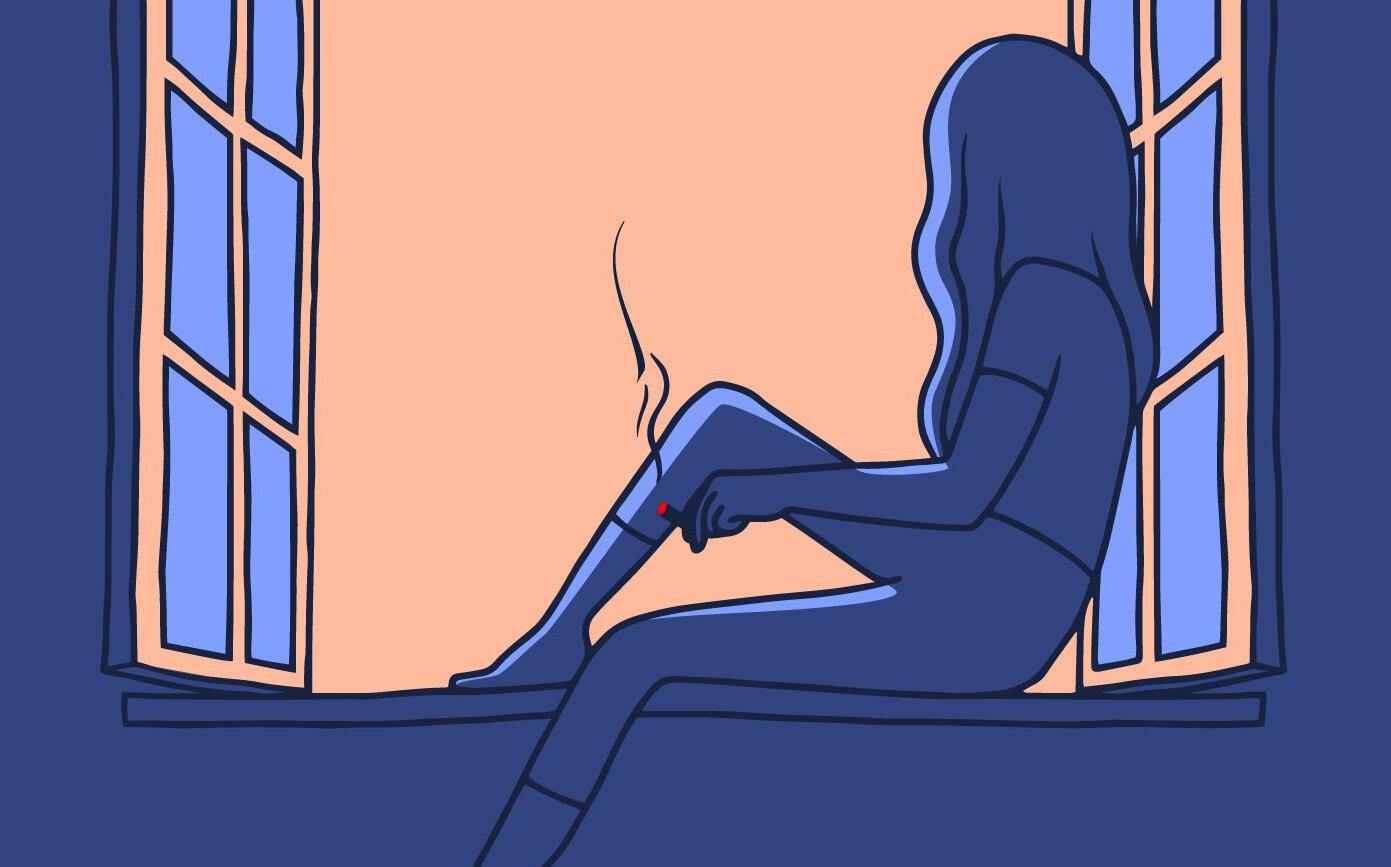 Hope returns to event venues faster than federal funds arrive
Hope returns to event venues faster than federal funds arrive
Trending
Pot legalization sparks tension with landlords

These days the scent of cannabis is a common occurrence in most American cities, legalized or not. Liberal use and loosening laws have millions of Americans sparking up brazenly. Banned from public use in most states where it’s permitted, cannabis use happens primarily at home, often creating conflict between renters and landlords. Whether you know it or not, chances are you’re renting to a pot smoker, a growing portion of renters. With recreational usage already legalized and retail sales set to begin soon in America’s largest city, here’s what landlords need to know about one of America’s fastest-growing habits.
Read more
 Hope returns to event venues faster than federal funds arrive
Hope returns to event venues faster than federal funds arrive
 7 Niche Property Types to Pay Attention to in 2021
7 Niche Property Types to Pay Attention to in 2021
The national attitude towards marijuana has swung dramatically over the past decade. Just 10 years ago, less than a third of Americans supported legalization efforts. Today, 91 percent of Americans say that marijuana should be legal for medical and recreational use, or for medical use only, according to the latest survey from Pew Research Center. That change is playing out politically, more than three dozen states and the District of Columbia now have some form of legalization, giving 43 percent of Americans access to some form of legal weed.
In many states where laws still prohibit use, local enforcement is turning to decriminalization. Gallup research estimates there are 55 million active marijuana users in the United States, with tens of millions more reporting having at least tried it. Millennials, who represent the majority (52 percent) of marijuana users, already represent nearly 40 percent of renters, soon they may be the majority. Cannabis use among Gen Z is even more rampant, more than twice the national average. Older Gen Z kids, now entering their 20s, are just starting to become renters. In a few short years, multifamily landlords could find the majority of their tenants smoking pot. Like many politicians have discovered over the past decade, prohibition may be a losing battle.
Most landlords and multifamily operators look at all smoke the same, putting smoke-free clauses in lease agreements as a catch-all. Those policies don’t fully articulate a few key differences. Marijuana smoke is fundamentally different from cigarette smoke. Cannabis smoke doesn’t contain acrolein (a chemical in tear gas), formaldehyde, or nitrosamines, giving it a different smell entirely. To many, this is common knowledge. Pot smokers have been learning to hide the smell for decades, the fact it doesn’t linger as long is a huge advantage. If cannabis smoke was as pervasive as tobacco smoke, such subterfuge would not be possible. Tobacco smoke is almost impossible to hide.
While both contain almost identical compounds, cannabis smoke contains 20 times more ammonia than cigarette smoke. Because ammonia is highly polar and water is polar, cannabis smoke clings to moisture particles in the air, allowing it to be carried away. Cigarette smoke lingers, clinging to walls, fabric, furniture, and other surfaces, causing property damage. The volume also plays an important factor. Cigarette smokers tend to smoke more and smoking takes longer, creating a larger volume of smoke as they burn down a whole cigarette each time. Each cigarette contains about a gram of tobacco and most smokers smoke more than once a day. Heavy cannabis users may smoke a gram of cannabis in a day, most are using far less. Cannabis smoke lingers too, but for hours, not years. Cannabis smoke may be a nuisance to your nose but it’s harmless to property. That’s why states with recreational use are full of Airbnb’s and hotels that permit cannabis smoking but not cigarette smoking. Bud And Breakfast, a website for marijuana smokers to find friendly accommodations, lists 465 properties.
Marijuana smoke is still dangerous and second-hand smoke can be just as threatening as tobacco, but usage levels, methods, and the ability to dissipate smoke make a difference. It’s important to remember studying cannabis is notoriously difficult, meaning scientific research into the differences between tobacco smoke and marijuana smoke has not been fully explored.
There’s no law saying you have to accommodate cannabis users. If you’re dead set on prohibition, smoke-free policies will provide the framework. Language should be explicit. The Public Health Law Center and American Lung Association created a model for smoke-free policies if you’re looking to implement one. Some cities like San Antonio, Texas, and Berkley, California have local ordinances in place banning smoking in units. HUD implemented a rule in 2018 requiring all public housing agencies to implement smoke-free policies. Smoke-free policies are unlikely to stop cannabis use, but it does give landlords a lever to pull when dealing with a problem tenant. Catching cannabis use can be difficult, precisely because the smell is so easy to dissipate and users have become practiced at covering it up. Smoke-free policies only cover the smoking angle of cannabis use. If residents are vaping or eating cannabis, you’ll likely never know. An addendum clarifying permitted forms of use, like vaporizing or ingestion, is a viable solution if smoke is the main problem.
Cultivation is a unique issue. Alongside legalizing use, many states have laws permitting growing a certain amount at home. Cannabis in plant form smells entirely different than smoke, emitting a pungent skunk-like stench, and is far more pervasive. The way that cannabis is grown in-doors can also cause damage to structures and present a fire hazard. To prevent cultivation in a rental, a crime prevention policy can help. Explicitly banning illegal activity in the lease should be sufficient since federal law still prohibits cannabis use and cultivation.
Even if policies are in place, enforcing them can be difficult. Since there are valid medical reasons for cannabis consumption in many states, landlords need to be careful not to violate the Fair Housing Act with their tenant communication. The best-case scenario is warnings and communication get cannabis-using residents to take mitigating the smell seriously, preventing future issues before they become a bigger problem. Most courts require landlords to allow tenants to cure the defect, not giving renters the option to stop could jeopardize a landlord’s legal position. A judge deciding the fate of an eviction will look at much more than what policies are in place, many judges will hesitate to evict if use is discrete and harm is victimless. Even with policies in place, you could be in for a fight that may find its way into reviews of your property, discouraging prospective tenants. The evolving nature of cannabis laws and differences between state, local, and federal laws mean you’re best off consulting a lawyer if you’re serious about enforcing prohibition.
It’s not difficult to target cannabis users, most lease agreements already have language in place that does so and have for years. But that hasn’t stopped cannabis users in the past. Despite the proliferation of smoke-free policies, cannabis use has been rapidly growing across the country. Cannabis has become a growth industry, legal cannabis sales passed $17.5 billion in the United States. That’s not counting the millions of pot smokers in prohibition states that still buy from illicit sellers. Having rules in place to prevent smoking at an apartment complex doesn’t mean much to most cannabis users, who have made flaunting laws a habit. Considering cannabis users are breaking federal law every time they partake, most simply don’t care about what policies are in place. They’ll figure out a way around the rules, as the industry has for decades.
Many see the prohibition of cannabis to be hypocritical. Alcohol is responsible for tens of billions in property damage every year. Study after study has shown alcohol is one of the most common factors involved in offensive behavior and property damage incidents. Are there alcohol-free housing policies? Hardly. Apartment pools might as well be bars during the summer, full of revelry and alcohol. Anyone who’s lived in an apartment near a popular nightlife destination knows the struggle: excessive noise, drunken break-ins, damaged access points, late-night fire alarms, and plenty of visits from the police. Worse yet, alcohol plays a major factor in violence and aggression.
Despite overwhelming evidence showing the harm alcohol poses to public health, order, and the individuals who consume it, banning alcohol in multifamily housing sounds ridiculous. To a growing percentage of Americans, cannabis prohibition in multifamily housing sounds even more absurd. Every landlord will have their own stance on cannabis but none of them can ignore its growing use and the increasingly favorable sentiment towards it. [Propmodo]




